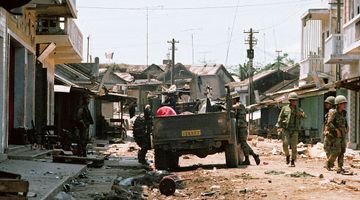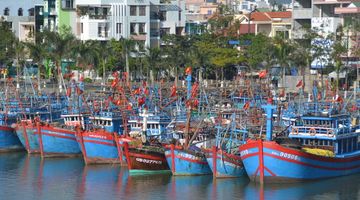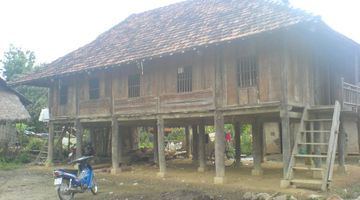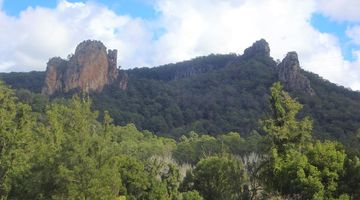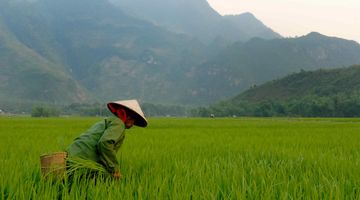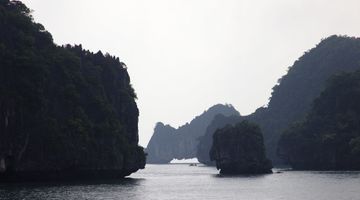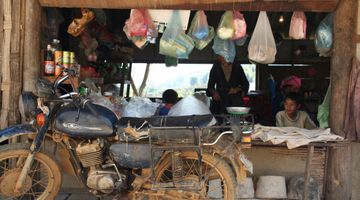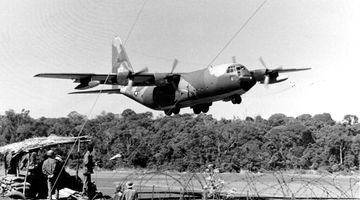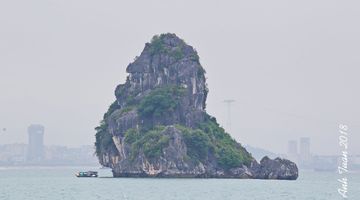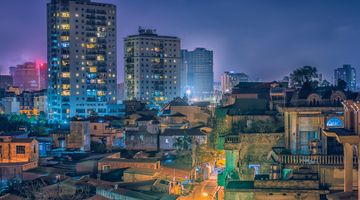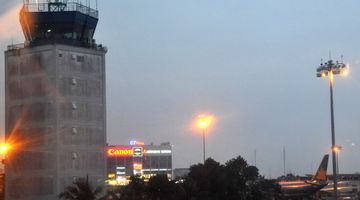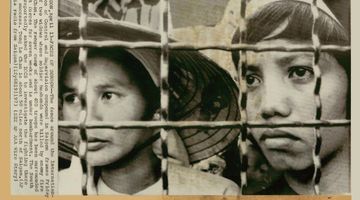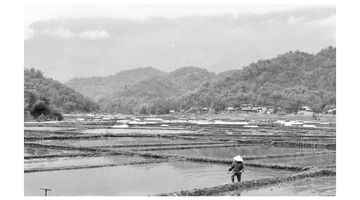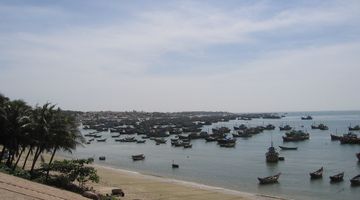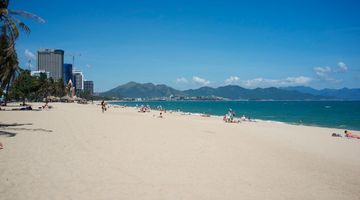Dong Ha
In a nutshell
The demilitarized zone, or DMZ, is the area around where the former border between north and south Vietnam used to be located. This spot has seen its fair share of war and bloodshed, and has thus become an attraction for history and military enthusiasts who want to learn more. Dong Ha is the perfect base to locate yourself while touring the area.
Why go to Dong Ha–DMZ
Most travellers either tour the DMZ from north to south or from east to west. Dong Ha serves as a wonderful starting point for either route.
If taking the north-south route, stop on the way to tour the Vinh Moc Tunnels, which were used as civilian bomb shelters during the Indochina War. If you’ve come from HCMC and seen the Cu Chi Tunnels, you might have an idea of what to expect, but you’ll likely be surprised by the vast differences between the two. The Vinh Moc Tunnels are so expanse, civilians used to go about their day-to-day lives within them while bombs were dropping overhead.
Alternatively, the east-west route has much to offer, as well, as it intersects with the Ho Chi Minh Trail, which is another significant draw for history lovers.
When to go to Dong Ha
From September to December, expect frequent rainfall in Dong Ha. While this might cut down on the temperatures, it can make touring the DMZ more of a challenge.
The months of August to November are even worse, with typhoons threatening to shut down transportation and other conveniences. If you’re traveling to Dong Ha in order to tour the area and learn about its past, it’s best to avoid the rainy seasons.
While the dry summer months do see high temperatures, you’ll likely be touring in an air-conditioned car, which makes it bearable. Plan to bring mosquito repellent either way, and a good umbrella if you can’t avoid the rain.
Where to stay in Dong Ha
Dong Ha isn’t a place to go for luxurious hotel stays. The city is planted right around Vietnam’s major Highway 1, so there are a decent amount of options, but none are really much to write home about. While we didn’t find any hostels to brush shoulders with expats in, there are some cheap guesthouse options.
The Hoa Phuong Guesthouse is one very cheap option for travellers looking for a warm welcome. Room rates won’t push past USD10 per night, and visitors continue to remark on the quality service. (485 Quoc lo 9)
Note In some cases, you’ll have to pay higher rates as a foreigner in Dong Ha, which can be a bit frustrating. With prices so cheap to begin, though, it’s hard to complain.
Where to eat in Dong Ha
There isn’t too much to offer in terms of fine dining in Dong Ha, but cheap, hearty Vietnamese meals can be found spread throughout the city. A number of seafood restaurants have also scattered themselves up and down the roads, offering unique versions of some Vietnamese favourites.
Shrimp paste is a commonly used ingredient here, and dishes like bun dau mam tom, made with tofu, rice vermicelli, and spices and herbs, comes topped with this unusual tasting add-on. Also be on the lookout for hot pot and pho for some delicious alternatives.
If you’re yearning for a western style meal, every traveller who comes through Dong Ha knows to stop by Tam’s Cafe. The coffee is decent, the prices are right (USD1-2), and a good mix of western and Vietnamese meals are served here.
Getting around in Dong Ha
Dong Ha is a large, dusty city with scenery not really made for strolling. We found traversing the area on foot to be a bit of a hassle, as the traffic is typically bad, distances are too far to walk, and the weather can get fairly hot.
The easiest way to tour the city is on the back of a motorbike taxi. While you can find metered taxis as well, motorbikes were plentiful, cheap, and convenient. You won’t spend more than a few USD no matter where in the city you go; simply walk to the nearest corner to find an available ride.
If you’re in Dong Ha to tour the DMZ, booking a tour is the easiest option. Buses or private transportation will make your visit simple and convenient. A hotel pick up will usually be arranged, so finding your own transportation isn’t necessary.
Getting in and out
There are a number of ways to get to and from Dong Ha from inside and outside of the country.
If you fly from anywhere within the country, Hue is the nearest domestic airport to Dong Ha. Flights from Hanoi cost around USD120 and take just over one hour. Flights to and from Ho Chi Minh City are even cheaper, with one way tickets often selling for less than USD100 on VietJet Air, and a flight time of just under an hour and a half. From Hue Dong Ha is only an hour an a half away by train. Getting to Dong Ha will cost you about USD6.
For international flights, Da Nang’s airport, about 170 kilometres away, is the best option. From there, you can access all of Southeast Asia with frequent flights coming in and out.
Taking a train is also an option though it takes around 13 hours to get from Dong Ha to Hanoi and around 24 hours to Ho Chi Minh City with tickets between USD20 and USD40 for a birth in the first class sleeper respectively.
One important mention is Dong Ha’s close proximity to the Lao border. Multiple tour operators and minibuses run the route frequently. For USD5-10, you can jump on a bus to Savannakhet, Laos, and switch to another onward transportation mode from there.
Safety in Dong Ha
The biggest concern for most travellers visiting Dong Ha is making their way across the Lao border without hassle. We found many “tour operators” to be a bit sketchy, often jam packing their vans beyond full, and then dropping you at the border after promising to transport you all the way to your destination city. Too many travellers find themselves stranded at the border, scrambling to find onward travel. Beware of this scam.
